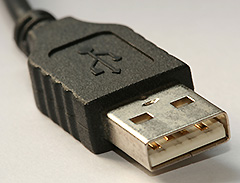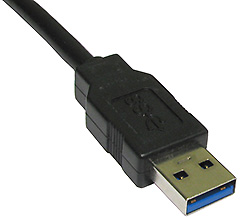USB Type-A
Posted on October 25, 2015 by KVMGalore | 0 comments


Also known as USB Standard-A, USB Type-A is the original design for the USB standard with a flat and rectangular shape.
On a typical USB cable, the Type A connector, aka the A-male connector, is the end that goes into a host, such as a computer. And on a host, the USB port (or receptacle) where the Type A-male goes into, is called an A-female port. Type-A ports are mostly in host devices, including desktop computers, laptops, game consoles, media players and so on. There are very few peripheral devices that use a Type-A port.

Different USB versions including USB 1.1, USB 2.0, USB 3.0 currently share the same USB Type-A design (although USB 3.0 implements a blue color-coding on both male and female connectors, instead of the previous white color) . This means a Type-A connector is always compatible with a Type-A port event if the device and host use different USB versions. For example, a USB 3.0 external hard drive also works with a USB 2.0 port, and vice versa.
Similarly, small devices such as a mouse, keyboard, or network adapter that have hard-wired USB cables always use Type-A connectors. That's true also for things without cables, such as a thumb drive.
Though USB 3.0's connectors and ports have more pins than those of USB 2.0 versions to deliver faster speed and higher power output, these pins are organized in a way that doesn't prevent them from physically working with the older version.
Note: There are smaller Type-A plugs and connectors, including Mini Type-A and Micro Type-A, but there are very few devices that use these designs.





